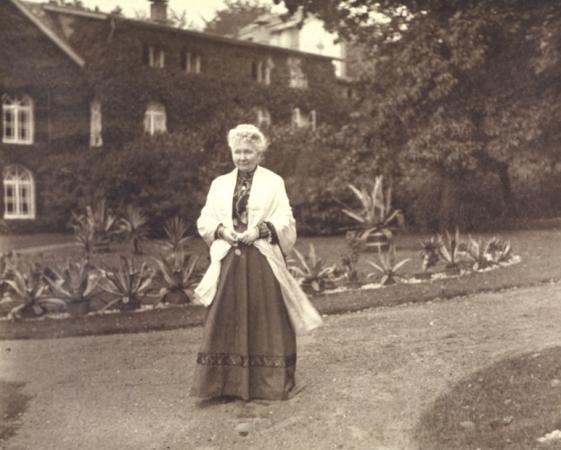On July 30, we marked the 110 anniversary of the laying of the foundation stone ceremony in the Peace Palace. Since the first foundation stone of the Peace Palace was laid 110 years ago, the Peace Palace has become an icon of peace and justice for the city of The Hague. However, acquiring the building location for the Peace Palace at the border of Scheveningen, on the estate Zorgvliet, was not that simple... Here is the fascinating story.
By Ms. Bettemiek Grijns, student of History and Archives at the University of Amsterdam
The first choice for a building location was a part of the estate of the Dutch Countess Van Bylandt on the Benoordenhoutseweg in The Hague, which she inherited from her father in 1902. Apart from the estate, she was also responsible for the management of the philanthropic obligations her father left behind.[1] Therefore it was not surprising she was willing to sell her lands to the Carnegie Foundation in order to build the new ‘Temple of Peace’. The ideology of Andrew Carnegie perfectly matched her own philanthropic ideas. The offer of Van Bylandt was taken very seriously by the board of the Carnegie Foundation, responsible for the building process of the Peace Palace, and every detail was taken into account. In the Carnegie board meeting of 10 October 1904, the advantages were specifically mentioned: The large dimensions of the grounds and the outline of the park were two very positive things. And the area with the approximaty of other government and embassy buildings was favorable. A contract of sale was already drawn up on the 22nd of October 1904.
Building in Nature
But at the same time different locations were put forward that were better suitable according to other parties, Koekamp for example was ideally located in an area partly situated in the woods of The Hague, het Haagse Bos. The municipality of The Hague however raised issues influenced by the inhabitants of the city and several letters were written to protest against building in the woods and to give up these important parts of nature was outrageous for many. The Malieveld was also put forward as ideal location but soon was also rejected because of protests from ‘Hagenaars’, they did not want to give up the public park as a favorite green area in the middle of the city. Therefore Koekamp and the Malieveld were crossed of the list.
Zorgvliet
During a board meeting in 1905 an incoming message from Mr Adriaan Goekoop came up suggesting the grounds of Zorgvliet. Goekoop was an entrepreneur from The Hague who also bought parts of land owned by King Willem II. Princes Sophie had sold the estate to pay of the debts of her father King Willem II. The board of the Carnegie Foundation was at first not too keen on the offer and was still convinced of acquiring the grounds of the Countess van Bylandt. But then, partly because of objections of members of parliament, suddenly the building location at the estate of Van Bylandts was rejected. The Board decided that Zorgvliet was in the end the best option. The Government was convinced to donate 700.000 guilders to the Carnegie Foundation to buy the land from Adriaan Goekoop.
All of a sudden another problem arose when the building company informed the Carnegie Foundation of a prohibition to build anything on the Zorgvliet estate until 1910. This prohibition was imposed by Princes Sophie and was still applicable when she sold the property to Mr Goekoop. At that point the Carnegie Foundation considered going to court to expropriate the property but was also somewhat hesitant because of political consequences and the delay this might have on the whole project. New suggestions of other locations near the Scheveningse Bosjes and the Hague Zoo were mentioned at that point.
All’s well that ends well
After a month things turned out all right after all; the building company was willing to cave in and an official authorization to give up the estate was by the Great Duke of Saksen-Weimar Eisenacht, husband of Princess Sophie. The very last hurdle to take was a Russian Chapel, which was owned by Princess Anna Palowna and was still located on the building site. It was arranged that the Chapel was rebuilt elsewhere in The Hague. Finally in 1905 there was a suitable location, the grounds of Zorgvliet, and the first stone of the Peace Palace was laid on the 30th of July 1907 after a long negotiation process.
[1] Redactie, Bylandt, Marie Alexandrine Otheline Caroline van, in: Digitaal Vrouwenlexicon van Nederland. URL: http://resources.huygens.knaw.nl/vrouwenlexicon/lemmata/data/Marie van Bylandt [23/08/2015]
